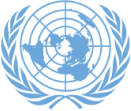Excellencies,
Distinguished Delegates,
At the outset, I would like to express my profound appreciation to the Government of Botswana, Chair of the Group of Landlocked Developing Countries (LLDCs) and commend you, Mr. Chair, for your able leadership in promoting the interests of our Group in various UN forums.
Being both LDC and Landlocked country, the Lao PDR has unavoidably been heavily affected by the impact of the pandemic in many areas. With the pre-existing wide array of development challenges caused by remoteness from the world markets, the COVID-19 pandemic has further accentuated the difficulties our country has been facing.
Mr. Chair,
Transport corridors are considered the backbones of transportation networks, linking major gateways and hubs and constitute important means for enhancing connectivity and market access, as well as achieving efficient transit and reducing transport costs in LLDCs.
In this context, the Lao PDR has set an ambitious goal to transform itself from a landlocked into a land-linked country. In alignment with the VPOA’s priority areas, notable investment has been made in improving infrastructure connectivity which includes, among others the Laos-China high speed railway and highway projects, under the Belt & Road Initiative, which has proved to be a transformative breakthrough in enhancing the regional trade integration and connectivity. In addition, the Lao PDR has recently launched the operation of dry ports and logistics parks to further enhance more seamless transport services in order to facilitate and reduce transport-related costs, increasing competitiveness for regional trade and foreign direct investment, all of which are part of our national development strategy. At the regional level, the Lao PDR has also actively participated in implementing of the Regional Comprehensive Economic Partnership (RCEP) Agreement, the Master Plan on ASEAN Connectivity 2025 and the ASEAN Comprehensive Recovery Framework, among others.
Mr. Chair,
Despite important progress made in the implementation of the VPOA during the past eight years, much more remains to be done. In particular, external resources are required to fill in the remaining gap and greater attention must be given to scaling up trade facilitation, improving digital and energy connectivity, and enhancing trade diversification through the promotion of productive capacities, industrialization and structural economic transformation, among others. On this note, it is highly important to accelerate progress towards the priority areas of the VPOA and other infrastructure development initiatives, including mobilization of greater support from development partners, international financial institutions and the private sector. Therefore, the Lao PDR calls upon the international community to provide enhanced financing, investment, technical assistance, transfer of technological knowledge, capacity building. Importantly donor countries should honour their ODA commitment.
Mr. Chair,
I would like to conclude by reiterating Lao PDR’ firm commitment to achieving the objectives of the VPOA through an enhanced partnership with transit countries, development partners, UN agencies, international and regional financial institutions and private sectors, among others. Taking this opportunity, I would also like to express my sincere appreciation to all partners including OHRLLS for your continued support and assistance extended to the Lao PDR in the implementation of the VPOA.
I thank you.

